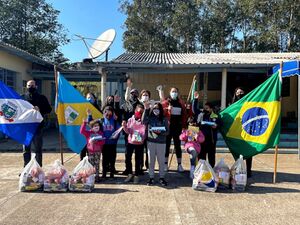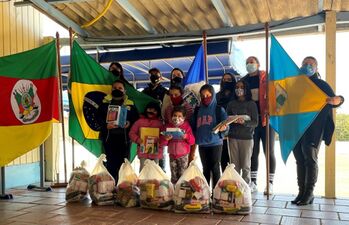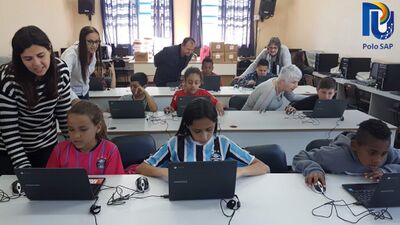Remote Education for Girls in Brazil: Difference between revisions
(Updated problems) |
(Updated projects) |
||
| Line 29: | Line 29: | ||
|scraped_from=GlobalGiving | |scraped_from=GlobalGiving | ||
|feature_image=File:EMEF_ngelo_Tedesco__Maria_Eduarda_de_Sousa_Martins_3_ano_1_Large.jpeg|Municipal Elementary School ngelo Tedesco - stude | |feature_image=File:EMEF_ngelo_Tedesco__Maria_Eduarda_de_Sousa_Martins_3_ano_1_Large.jpeg|Municipal Elementary School ngelo Tedesco - stude | ||
|images=[[ | |images=[[File:ph_56020_218624.jpg|Delivery of kits during COVID19 pandemic in 2021,File:ph_56020_218625.jpg|Families receiving first support,File:ph_56020_218626.jpg|Kids and monitors for digital training,File:EMEF_Nercy_Rosa__Maria_Clara_Machado_da_Silva_do__7_Ano_1_Large.jpeg|Municipal Elementary School Nercy Rosa - student M,File:EMEF_Madre_Teresa__Raica_de_Souza_Ramos_do_8_ano_1_Large.jpeg|Madre Teresa Municipal Elementary School - student,]] | ||
|coordinate=, | |coordinate=, | ||
|geo_id=3469034}} | |geo_id=3469034}} | ||
Latest revision as of 12:43, 5 August 2023
| Organization | APUSA - Associacao Polo Universitario Santo Antonio |
|---|---|
| Region | Brazil |
| Website | Website |
| N/A | |
| ProjectLeader | APUSA- Associacao PoloSAP |
| Linked Problems & Solutions
|
|---|
Direction Digital is a project focused in digital inclusion primarily for girls in Brazil. It enables continuing development of new school teachers in educational digital technologies, community orientation and resources to families in remote areas to have access to education digitally, specially after COVID-19. Funds will provide resources deployed to families with girls from 04 to 14 years old, food and school supplies for the most vulnerable students and develop monitors as village leaders.
Challenge
During the pandemic, 72% of the students stop frequenting schools, and almost 9 million students had zero education activity for more than 3 months. The biggest challenge the education system is facing is lack of resources and capabilities to provide remote education and digital inclusion. Minimal infrastructure, limited interne access and scarcity of portable devices are key areas of immediate support required to maintain suboptimal education in remote areas.
Long-Term Impact
The project has the potential to bring over 300 girls back to school and enable 60 families across several rural areas for digital inclusion, orientation and resources to initiate on remote education. The continued education and enablement of these teachers and students impacts on 20% of the kids for the Santo Antonio region being back to school.
References
Additional Documentation
https://www.globalgiving.org//pfil/56020/projdoc.pdf
Project Gallery





